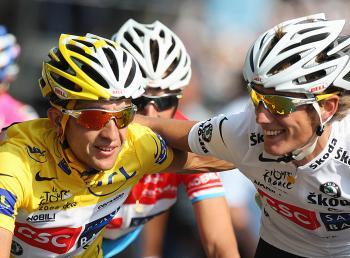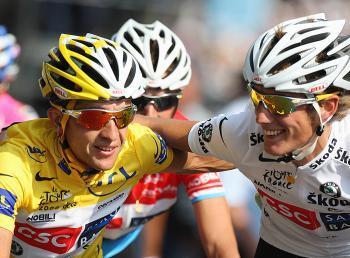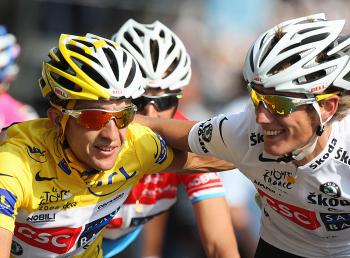Carlos Sastre Wins the 2008 Tour de France
Carlos Sastre won the 2008 Tour de France, after riding thousands of miles across France in three weeks.

Overall race winner Carlos Sastre of Team CSC Saxobank (L) is congratulated by teammate Andy Schleck as he crosses the finish line on the Champs Elysees during Stage Twenty One of the 2008 Tour de France Bryn Lennon/Getty Images
|Updated:





